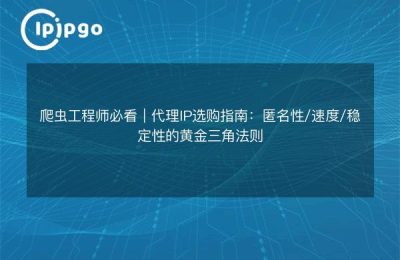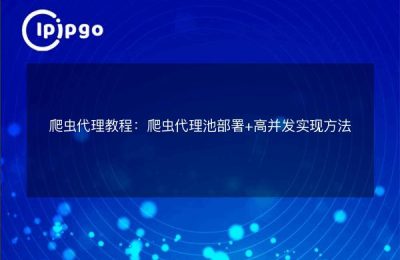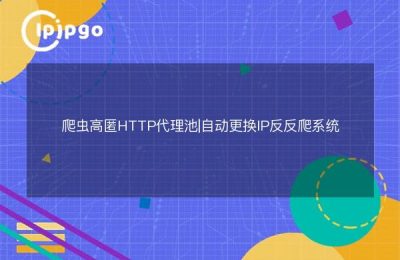
In the era of big data, web crawlers have become one of the main means of obtaining huge amounts of data. However, in order to avoid being blocked by websites, using proxy IP is one of the essential strategies. In this article, we will elaborate on the strategy of using proxy IP for crawlers to help you crawl web data more efficiently.
1. Why proxy IPs are needed
When performing web crawling, frequent access requests can easily trigger the anti-crawler mechanism of the target website, resulting in IP blocking. Using a proxy IP can effectively hide the real IP address of the crawler and simulate the access behavior of multiple users by constantly changing IPs, thus bypassing the anti-crawler mechanism.
2. Choose a suitable proxy IP
Choosing the right proxy IP is the key to successful crawling. Below are several common proxy IP types and their applicable scenarios:
1. Free Proxy IP: Although the cost is low, the stability and anonymity are poor, and it is easy to be blocked. Suitable for small-scale, low-frequency data crawling.
2. Paid proxy IP: Higher stability and anonymity, but need to pay a certain fee. Suitable for large-scale, high-frequency data capture.
3. Rotating Proxy IP: Automatically change IP to avoid the trouble of changing IP address frequently. It is suitable for the scenarios that need to capture data for a long time and continuously.
3. Setting up the proxy pool
In order to improve the efficiency and stability of the crawler, a proxy pool can be set up. The proxy pool contains multiple proxy IPs, and the crawler randomly selects an IP to access at each request, thus avoiding frequent accesses by a single IP leading to blocking.
You can set up an agent pool by following the steps below:
1. Collect Proxy IPs: Obtain a large number of proxy IPs from various proxy IP providers.
2. Verify Proxy IPs: Check the availability and speed of proxy IPs and screen out high-quality proxy IPs.
3. Regularly update the proxy pool: check the availability of proxy IPs regularly, remove invalid IPs and add new ones.
4. Controlling the frequency of requests
Even if you use a proxy IP, frequent requests may still trigger the anti-crawler mechanism of the target website. Therefore, controlling the request frequency is a very important strategy.
The frequency of requests can be controlled in the following ways:
1. Setting request intervals: Setting random time intervals between each request simulates the access behavior of a human user.
2. Limit the number of concurrent requests: Limit the number of simultaneous requests to avoid sending a large number of requests in a short period of time.
5. Use of User-Agents
A User-Agent is a string sent from the browser to the server that identifies the browser type and operating system information. By changing the user-agent, different browsers and devices can be simulated, increasing the stealthiness of the crawler.
User agents can be used in the following ways:
1. Random selection of user agents: A user agent is randomly selected on each request to simulate different browsers and devices.
2. Setting up a user agent pool: similar to an agent pool, collect multiple user agents and update the user agent pool periodically.
6. Avoiding duplicate crawls
When performing large-scale data crawling, avoiding repeated crawling of the same page can improve the efficiency of the crawler and the quality of the data.
Duplicate crawling can be avoided in the following ways:
1. Record captured URLs: Record captured URLs after each capture to avoid repeated visits.
2. Use hash algorithm: hash the content of the crawled page, store the hash value to avoid crawling the page with the same content.
7. CAPTCHA handling
Some sites will block crawlers from accessing them via CAPTCHA. Dealing with CAPTCHAs can be tricky, but it can be solved in the following ways:
1. Manual solution: manually enter the CAPTCHA for verification when encountering CAPTCHA. Suitable for small-scale data capture.
2. Use of third-party services: automatic identification of CAPTCHA through third-party CAPTCHA recognition services, suitable for large-scale data capture.
concluding remarks
Through the above subheadings, we have detailed the strategy of using proxy IPs for crawlers. Strategies such as choosing appropriate proxy IPs, setting up proxy pools, controlling request frequency, using user agents, avoiding duplicate crawling and handling CAPTCHA can effectively improve the efficiency and stability of the crawler. I hope this article can provide you with valuable reference in the process of data crawling and make your crawler journey smoother.








